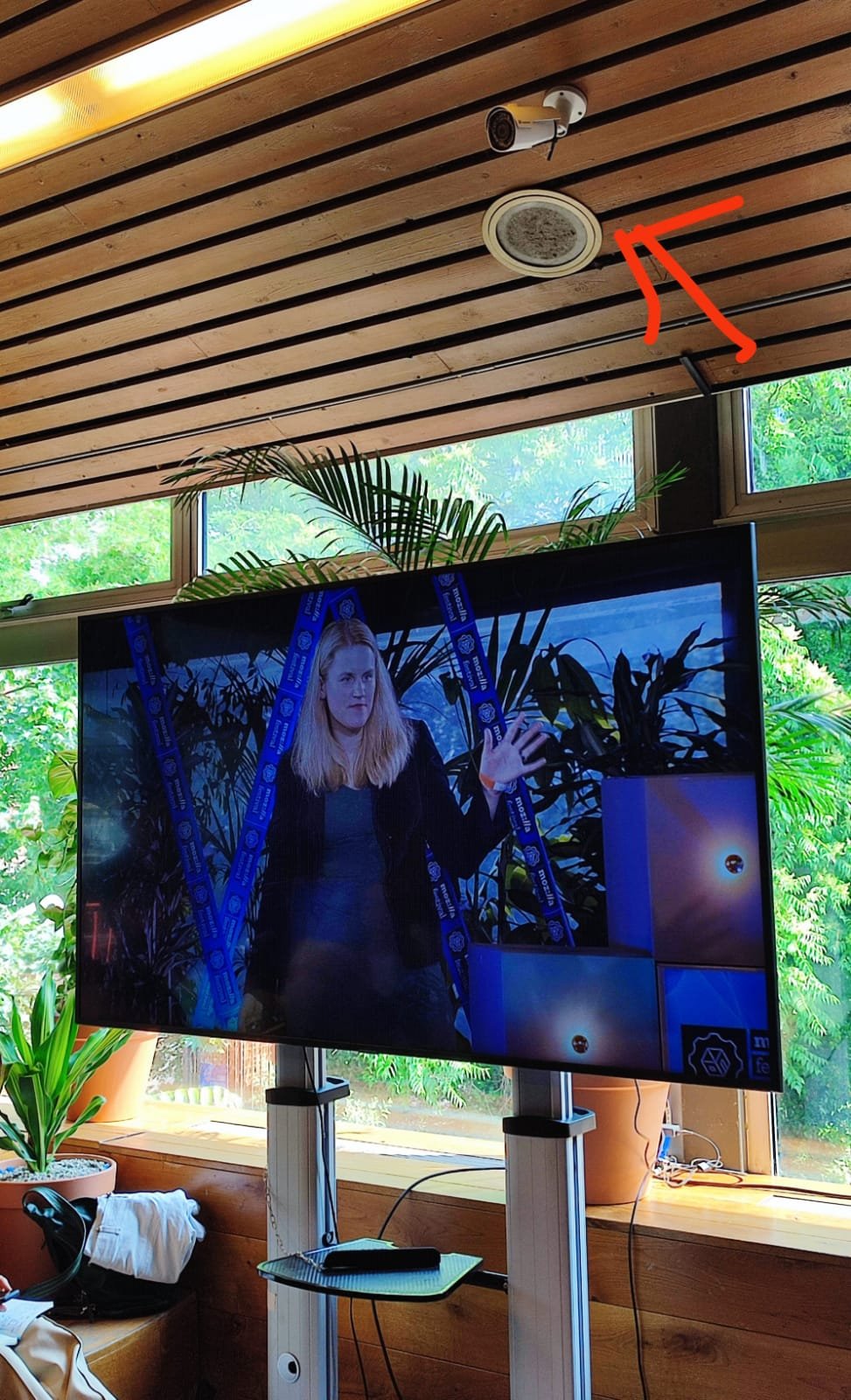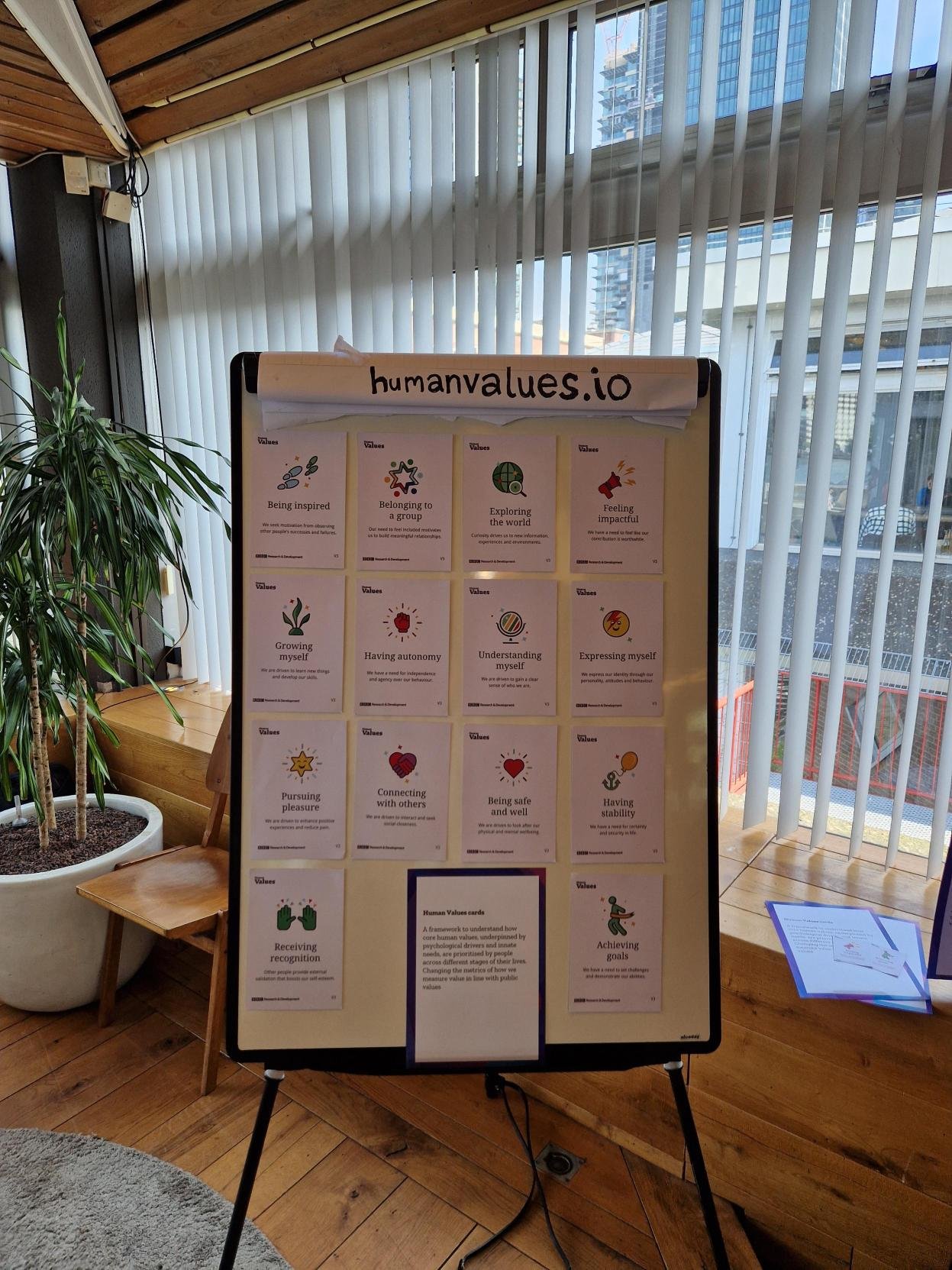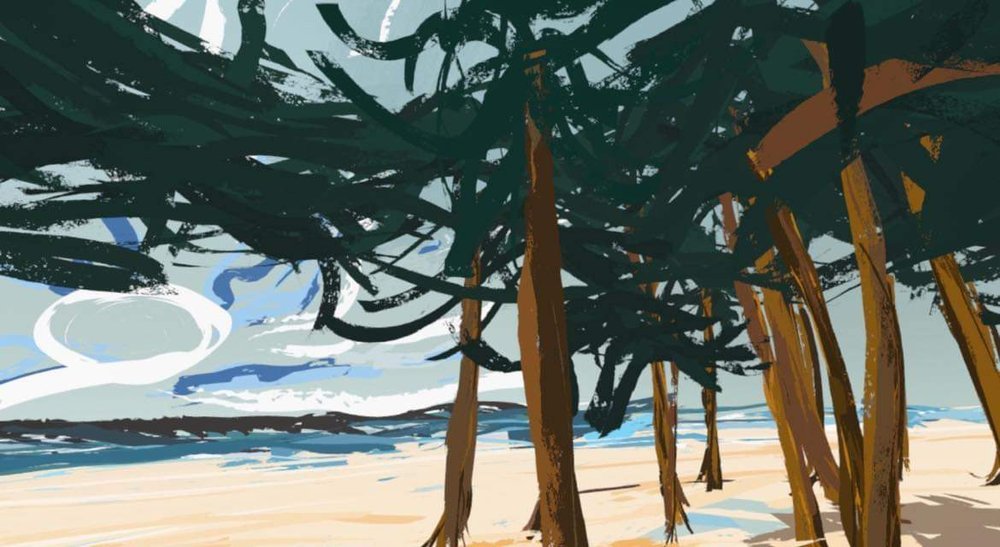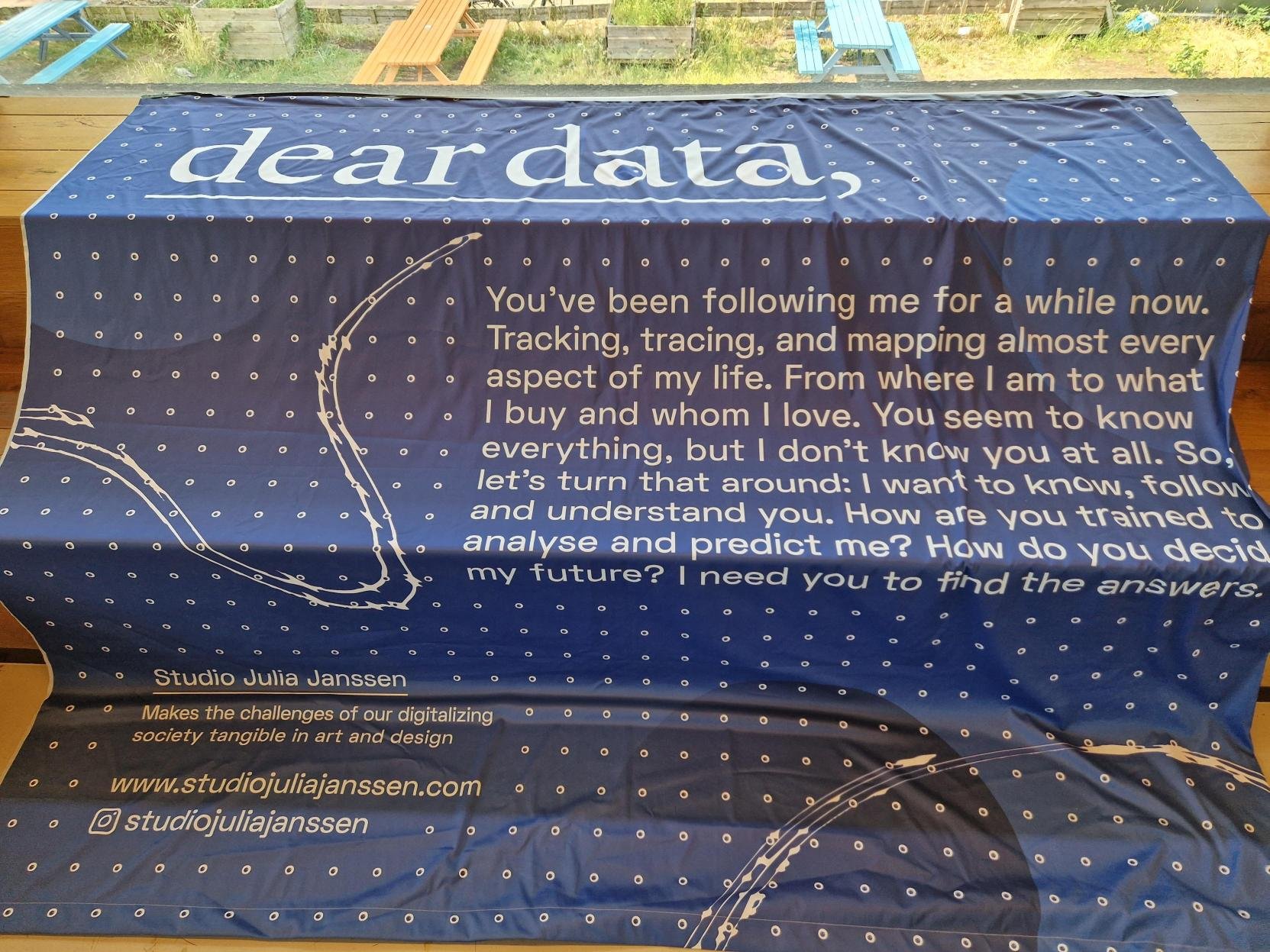MozFest 2023 - Amsterdam
MozFest is an annual festival organized by the Mozilla Foundation, a non-profit organization. It brings together technologists, activists, educators, and artists from around the world to explore the future of the internet and promote an inclusive online ecosystem. The festival offers a diverse range of sessions, workshops, and interactive exhibitions by different artists (groups) that delve into topics such as digital literacy, privacy, security, ethical use of technology and much more.
This years festival was held in Amsterdam at the Tolhuistuin located right across the river of the main train station.
There are several reasons why one should visit the MozFest in Amsterdam. Casual networking, interesting talks about AI and noumerous art projects that tackle and visualize privacy and policy issues. Privacy Salon had one more reason to be here: The CODE project:
The CODE Project
MozFest2023 exhibition of the projects: On the Exactitute of Maps, VOICES and clickedy.click
By IMPAKT, transmediale, Privacy Salon and Werktank
CODE aims to make the general audience in general and politicians and policymakers in particular, aware of the digital challenges of our time. We want big tech companies to be regulated, and our governments to curb their power, and protect our digital rights. How can we make politicians understand the urgency to act? What can we as concerned citizens, researchers, and artists do to support this process? How can we help develop a code of ethics for our digital future? How can we change Big Tech into Fair Tech?
CODE brings together artists, non-artists, politicians, policy makers and researchers living in Germany, Belgium, and the Netherlands. The participants get the opportunity to work closely together in groups in a co-creation process of six months. Every year we present the results at international festivals and events.
On The Exactitude of Maps
By Rebekka Jochem and Felipe Schmidt Fonseca
Digital representations of the physical world are built and updated in real-time as people use their digital devices to go about their lives. Even while wandering aimlessly through their neighborhood they generate a data trail that is instantly captured and fed back into the eternal cybernetic leviathan that not only describes the physical world but at the same time creates digital maps of behaviour, desires, and potential consumption. This collective dataset presents a valuable resource that is extracted for profit by a handful of corporations, weaponising it for explicit advertising or more subtle manipulation. In this presentation, we will raise questions about the ownership of this geo-spatial data and the imbalances that emerge. The piece investigates the ownership of spatial data, understood as an actual means of production for contemporary digital economies. It exposes how maps, route plans, and recommendations do not merely describe the world but create new digital dimensions over the physical reality to be exploited for profit by transnational corporations. The piece takes the shape of an audio-based interactive tour guide. As the audience walks through a contemporary neighbourhood, they listen to short stories, reflections, and questions exposing usually unnoticed dimensions of the making, updating, and everyday use of maps.
About the artists: Felipe Schmidt Fonseca is a Brazilian activist turned researcher who has been involved with collaborative projects for a couple decades. As a xenofeminist designer Rebekka Jochem challenges dominant narratives around technology.
clickedy.click
By Hennie Bulstra, Leon van Oldenborgh, Lukas Völp, Robin van de Griend
This is a provocative social experiment that aims to address the issue of non-consensual, untransparent online user tracking. By adopting the format of a dating platform that utilises UI/UX design as its core matching-making system, we aim to place its users in a context where their judgement and decision-making determine their own fate and the fate of others. In doing so, we raise awareness of the unsocial economic power structures that drive the way users interact and consume content online, thereby influencing the way our identities and perspectives on the world are formed from the outside.
About the artists: Leon van Oldenborgh playfully sparks reflection on how designed systems shape our daily interactions. Robin van de Griend is an independent coder working in the cultural sector. Lukas Völp designs interfaces that question the power relations between user and system. Hennie Bulstra is a policy advisor highly involved in emerging technologies.
VOICES
By Ahnjili Zhuparris, Allon Bar, Mohsen Hazrati, Yu Zhang, Jannie Busschers, Phivos-Angelos Kollias
This project explores the identification, control, and personalisation of our voice and hearing in the highly curated digital public space. The installation invites reflection on the impact of centralised platforms’ access to vast amounts of voice data, their ability to and practice of controlling online expression, and how it can affect who says what to whom. To do so, audience members are invited to use their voice to contribute to our blackbox mediator. Participants can then squeeze a device, triggering a mutated playback of their recorded voice. Bystanders can observe the alterations by listening and watching using speakers and a monitor.
About the artists: Ahnjili is a data scientist and artist interested in implications and ethics of AI. Mohsen Hazrati’s works focus on Literature and digital technologies. Phivos-Angelos Kollias is an award-winning composer from Greece, based in Berlin. Yu Zhang is an artist and design researcher working on interactive installations.
Other Projects at MozFest
Besides several talks, workshops and a keynote speech by Frances Haugen, MozFest also hosted a sing along session on the last day. As a closing session all attendees were invited to join and sing along with a band and connect through their music. There are no recordings of this special moment as it was supposed to be a individual and only in person shared moment.
The Anticipation of Rain
The Anticipation of Rain (view through the VR headset)
By Naima Karim
The Anticipation of Rain is an immersive art project which takes you on a 10minutes visual, auditory and olfactory journey. Naima was born in Bangladesh and used her artistic skills to create a VR experience of the monsoon rains. The journey starts with her guiding you through her drawing while you can spin around and see it in VR. After a while the rain comes and she hands you a perfume stick which smells like rain. You will feel a bit scared during the monsoon drawing but you will also experience the sunshine afterwards and the smell after the rain. It is really a fascinating art project.
Naima calls the beginning of the monsoon a romantic time of year, but she also points out that the rainy season has become more unpredictable and extreme due to climate change. It can be fatal for low-lying nations like Bangladesh, her native country.
About the artists (taken from their website): After graduating in Fine Arts I moved to the Netherlands and was inspired by The Dutch masters like Van Gogh’s colourful paintings and Ruisdael’s deep, dark yet beautiful clouds. Now I live in Saudi Arabia where the sky is clear with simple yet rich colours, inspires me to paint and experiment with all kinds of media. I work with watercolor, acrylic, oil, and mixed media depending on the mood and intended texture. I also experiment with a wide range of brush strokes, and knives, to achieve the textures. My works are sometimes realistic, sometimes impressionistic, and nowadays a bit abstract.
Her VR multisensory experience “The Anticipation of Rain” recently has been nominated for the VR social impact award by AIXR and Crystal Owl Awards by Steriopsia Europe.
Dataslip
By Alejandra Gomez Ortega, Vasileios Milias, Carlo van der Valk, and Jacky Bourgeois
With every click you make online, every app download you make and every card that you use, you donate your personal data for free to big companies.
Many people say something like “oh but I don’t have anything to hide”, but the moment that they see all of their shared data printed out on a receipt, this argument changes and leaves them (myself included) stunned. When I printed my data receipt it took a good minute and the receipt was a bit over 1.50 meters long.
In the beginning of the quiz you will be asked about what cards and apps you use on a daily or weekly basis.
Personalized public transport cards (e.g., OV-chipkaart)
Supermarket loyalty cards
Credit and debit cards
Wearables, including smartwatches and smart rings
Mobile apps, including weather, navigation, web browser, email, instant messaging, music, social media, dating, and period tracking apps
You can try it yourself and get a PDF version of your data receipt.
About the artists (taken from their website): This project is part of the PhD research of Alejandra Gomez Ortega. Our team includes Jacky Bourgeois and Gerd Kortuem whose guidance and knowledge continuously enriches Designerly Data Donation. We build and maintain this website, in collaboration with a group of people within the Data-Centric Design Lab.
Dear data…
By Studio Julia Janssen
A visualization of how meta collects our data beyond it’s own platform. Julia explains through her project, that we are surrounded by data and the we use it more and more frequently in our daily lives. Clicks, likes, chats, and swipes are all collected and processed without the knowledge of users. Many times also without consent because users click on the “consent” button with the idea that their data will stay with only one party. Many people do not consider third party sharing of their data.
The sharing of personal data can is ranging from basic information like exact location or order details of online shopping to more complex data about emotions, dreams, and vulnerabilities. All information and all actions taken online is recorded in data. Businesses profit significantly from the trade in this information. Ads can be targeted, for instance, with personalised messages that appeal to individuals at the appropriate time and place. All of these metrics are based on how you use apps and browse the web. Purely for their own profit: persuading you in more clicks and buys. You may have noticed specific advertisements after you bought a certain item online, or just spent a significant time browsing on one particular website or receive different YouTube adds after you went somewhere specific, for example the gym.
About the artists (taken from their website): Julia Janssen is an artist who researches the influence of digitalisation on our physical world. She makes the challenges of data, AI and technology tangible in interactive and performative installations. How do we deal with fairness, equality, autonomy, freedom and democracy in a data-driven society?
VA-PEPR
Co-ordinated by Dr. Sabine Jungiger and co-led by Dr. Urlich Reimer, Dr. Jens O. Meissner (HSLU W) and Dr. Jon Rogers
What if… your Google Home or Alexa would look like a microphone? Home assistant devices are designed to vanish into the background of your home. They are designed for you to forget they are there, until you need them that is of course.
And here comes the big question. Are you aware, that these assistants are mainly microphones? If we own a smart speaker, do we need to warn and get consent from the people we invite to our houses?
Would you behave differently, if your home speaker device looked like this?
I had a very interesting conversation with Sabine about this and I truly believe that people would start acting and talking differently.
About the artists (taken from their website): VA-PEPR is an interdisciplinary four-year project (01/2020 – 12/2023) funded by the Swiss National Science Foundation (SNSF) - Sinergia Program with a grant of 2.23 million CHF. Co-ordinated by Dr. Sabine Jungiger (HSLU D&K) and co-led by Dr. Urlich Reimer (OST), Dr. Jens O. Meissner (HSLU W) and Dr. Jon Rogers (Northumbria University), the project team includes researchers with expertise in human-centred design, human-computer interaction, home automation, digital services, ambient assisted living, computer science, behavioural economics, socio-informatics, Open IoT, law, ethnography and health. Its aims are to generate novel insights into the emerging issues associated with voice assistant (VA) use in Switzerland and beyond.











